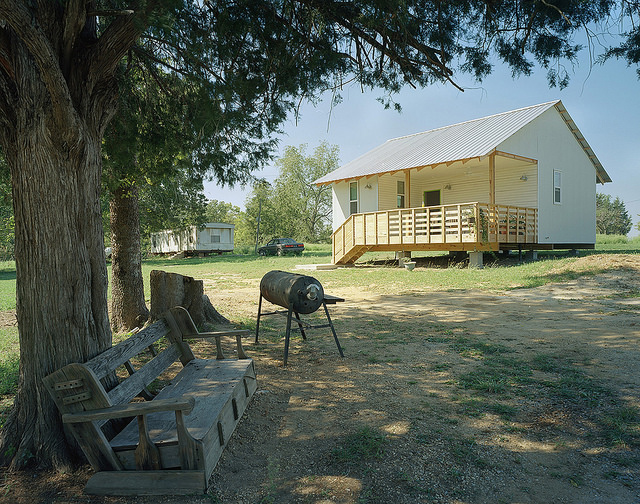Rural Studio, Auburn University’s student-driven design/build initiative, is now collaborating with Fannie Mae in an effort to expand the studio’s affordable housing designs across the country.
The new effort is known as the 20K initiative.
“In 13 years we’ve built 30 homes within our service population,” says Rusty Smith, associate director at Rural Studio. “They’re in Hale County, close to border of Alabama,”
Smith anticipates that “thousands” more can be built across the nation.
The initiative aspires to enable broader access to titled homeownership in underserved rural communities. It also looks to support both housing and local economies in rural markets and involves collaboration with a wide range of national partnerships and municipal stakeholders.
Rural Studio is not interested in spreading itself across the nation, but in developing its product so that others can deliver it more affordably. “We have a housing product that’s been developed in the studio with students – one that can be delivered,” he says. “What Rural Studio is doing now is developing communication products and infrastructure so our partners can develop the housing.”
Research developed from the initiative with Fannie Mae is being shared with other industry groups and educational institutions as part of an effort to address the nation’s shortage of affordable housing.
“We’re working with folks on the national level to do that work – Fannie Mae, USDA, HUD, the Department of Energy and The Insurance Institute for Business and Home Safety,” he says. “Habitat for Humanity is rolling this product into their work.”
The homes are mostly one-and two-bedroom single family residences, from 500 to 900 square feet in size. Their cost can range anywhere from $35,000 with volunteer labor to $80,000 including labor. A pure, for-profit model would depend on what the market would pay.
“Over the years we’ve developed 23 prototypes,” he says. “We have three that would be extremely useful for this initiative, and we’re testing a fourth now.”
For a country whose inventory of affordable housing is woefully inadequate, here we have a proven, workable solution – from innovative architecture students, in the field.
For more, go here.
[slideshow id=1938]


